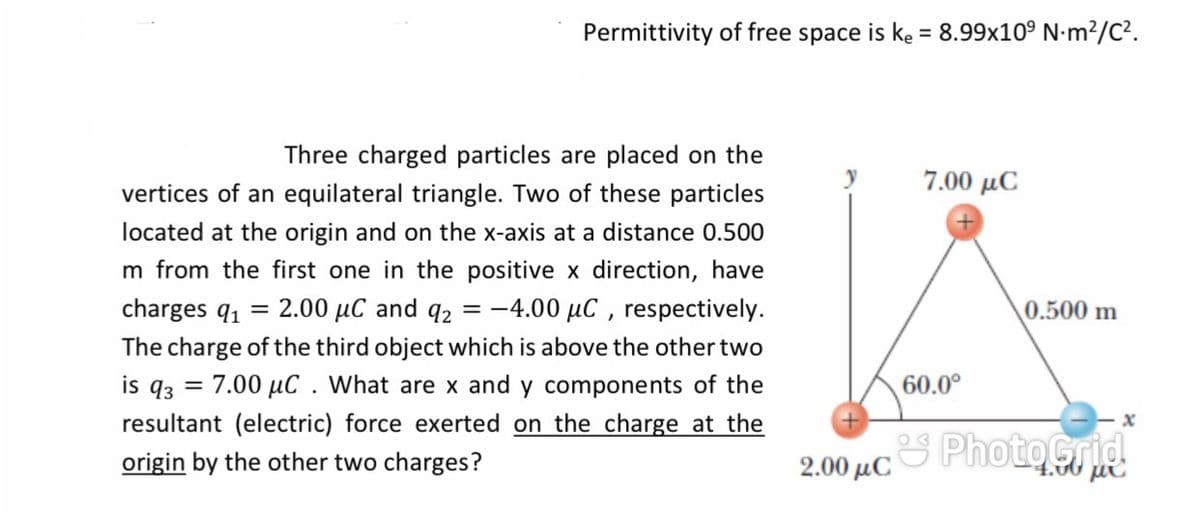Three charged particles are placed on the vertices of an equilateral triangle. Two of these particles located at the origin and on the x-axis at a distance 0.500 m from the first one in the positive x direction, have charges q1 = 2.00 µC and q2 = -4.00 µC , respectively. The charge of the third object which is above the other two is q3 = 7.00 µC . What are x and y components of the resultant (electric) force exerted on the charge at the %3D origin by the other two charges?
Three charged particles are placed on the vertices of an equilateral triangle. Two of these particles located at the origin and on the x-axis at a distance 0.500 m from the first one in the positive x direction, have charges q1 = 2.00 µC and q2 = -4.00 µC , respectively. The charge of the third object which is above the other two is q3 = 7.00 µC . What are x and y components of the resultant (electric) force exerted on the charge at the %3D origin by the other two charges?
Related questions
Question
What are the x and y components of the resultant electric force exerted on the charge at the origin by the other two charges?

Transcribed Image Text:Permittivity of free space is ke = 8.99x10° N-m²/C².
%3D
Three charged particles are placed on the
7.00 μC
vertices of an equilateral triangle. Two of these particles
located at the origin and on the x-axis at a distance 0.500
m from the first one in the positive x direction, have
charges q1
2.00 µC and q2 = -4.00 µC , respectively.
0.500 m
The charge of the third object which is above the other two
is q3
7.00 µC . What are x and y components of the
60.0°
resultant (electric) force exerted on the charge at the
PhotoGrid
origin by the other two charges?
2.00 μC
Expert Solution
This question has been solved!
Explore an expertly crafted, step-by-step solution for a thorough understanding of key concepts.
This is a popular solution!
Trending now
This is a popular solution!
Step by step
Solved in 2 steps with 1 images
